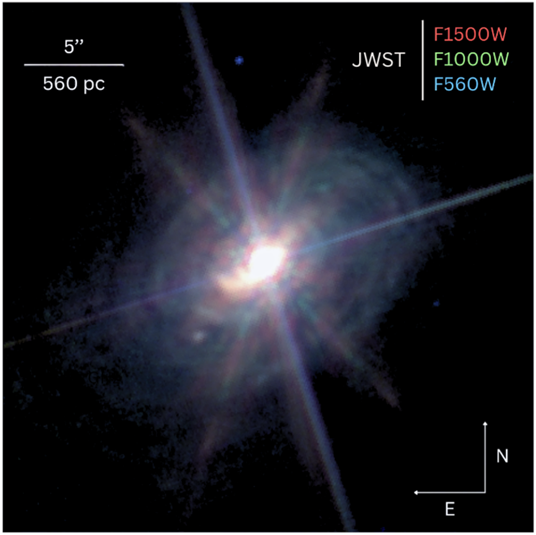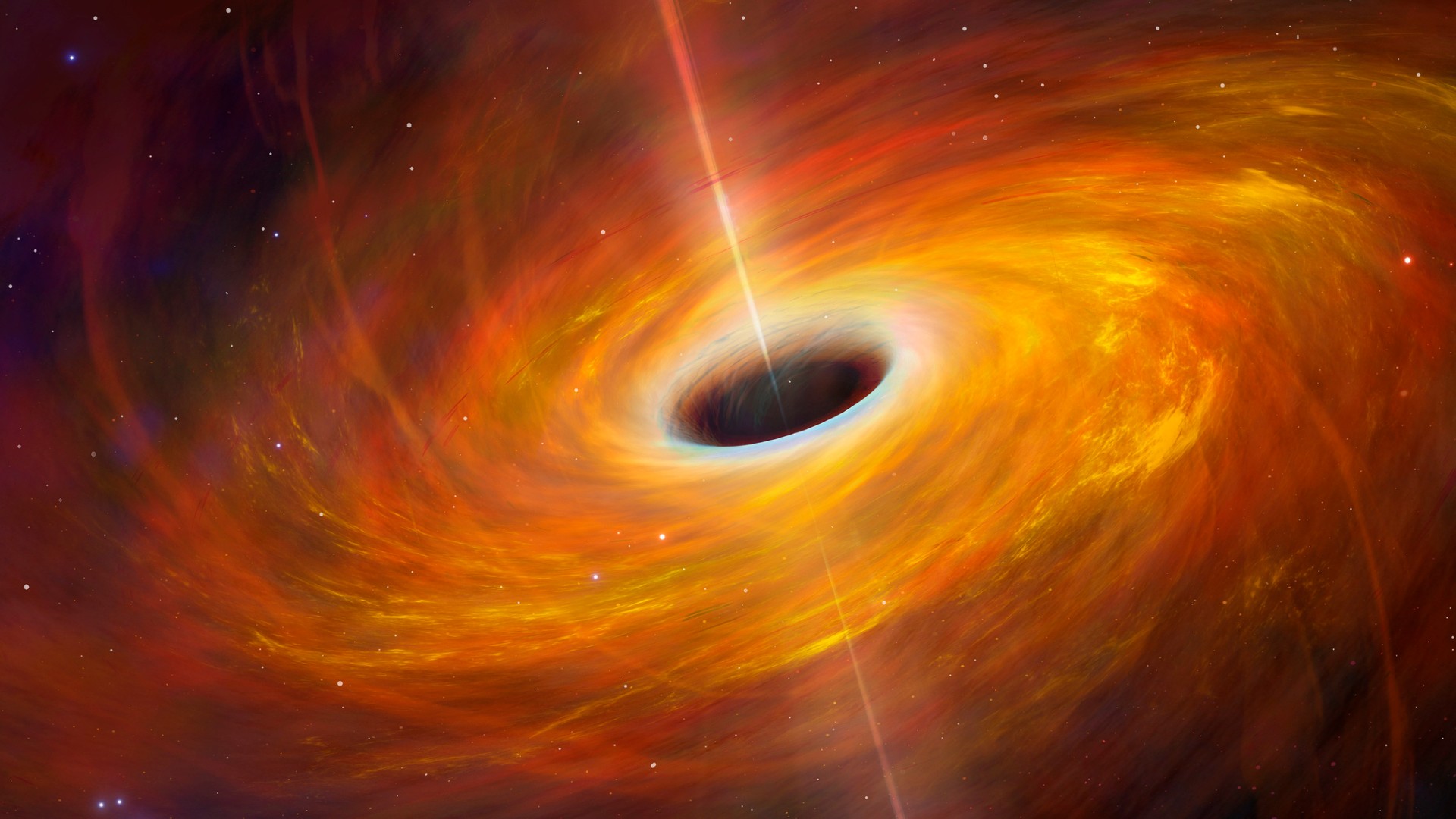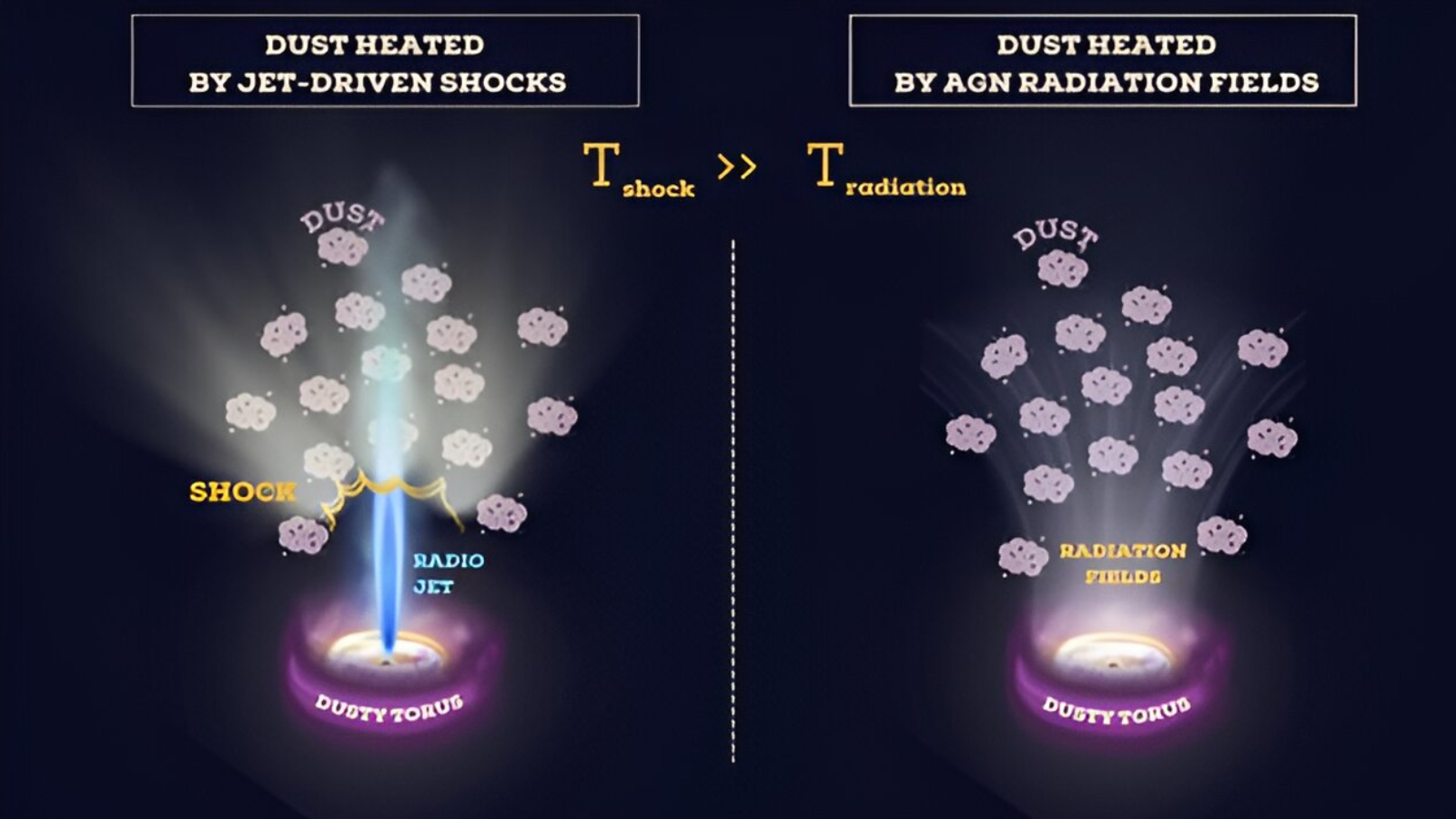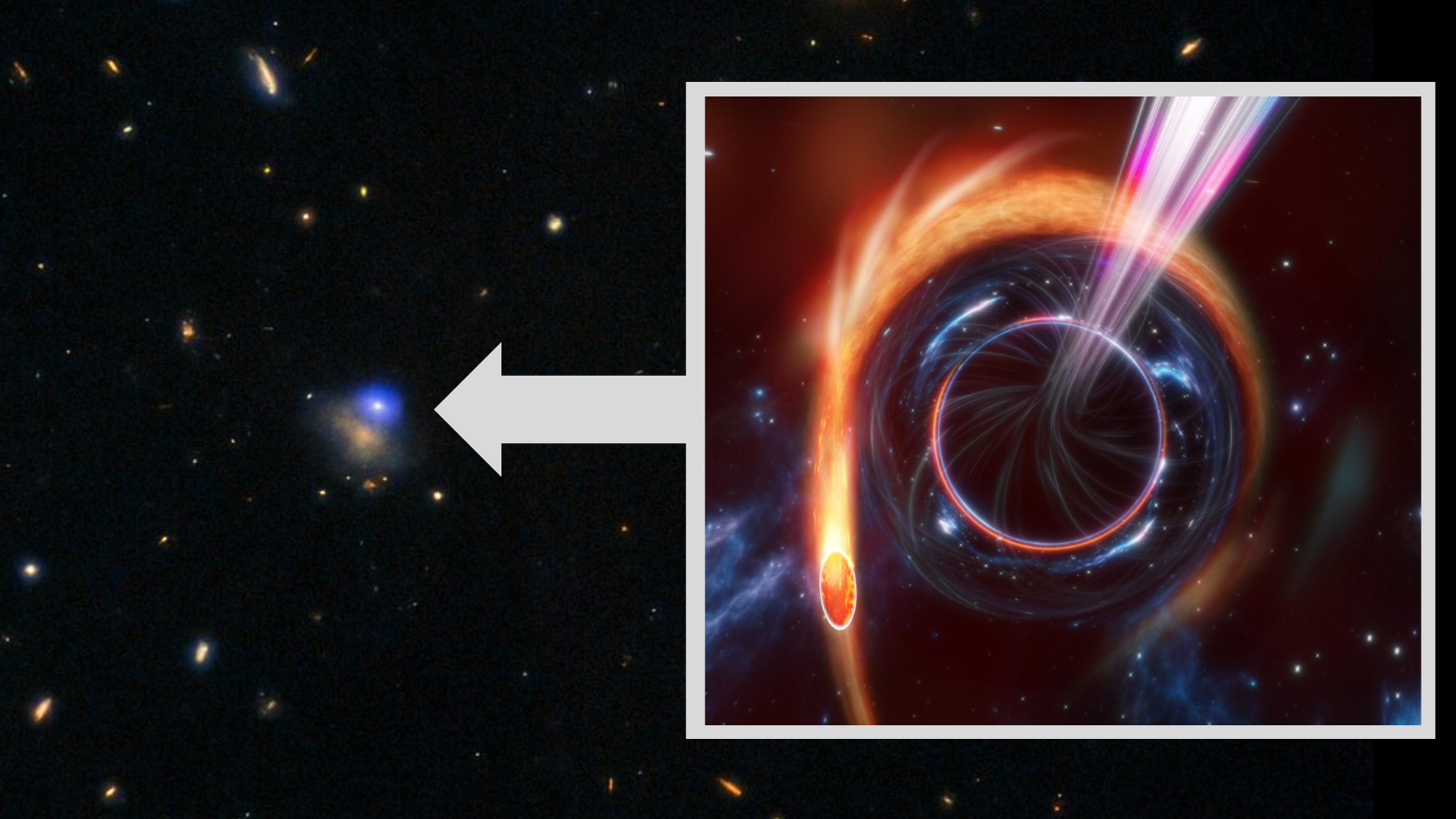James Webb Space Telescope finds a shock near supermassive black hole (image)
"There is a lot of debate as to how active galactic nuclei transfer energy into their surroundings. We did not expect to see radio jets do this sort of damage. And yet here it is!"
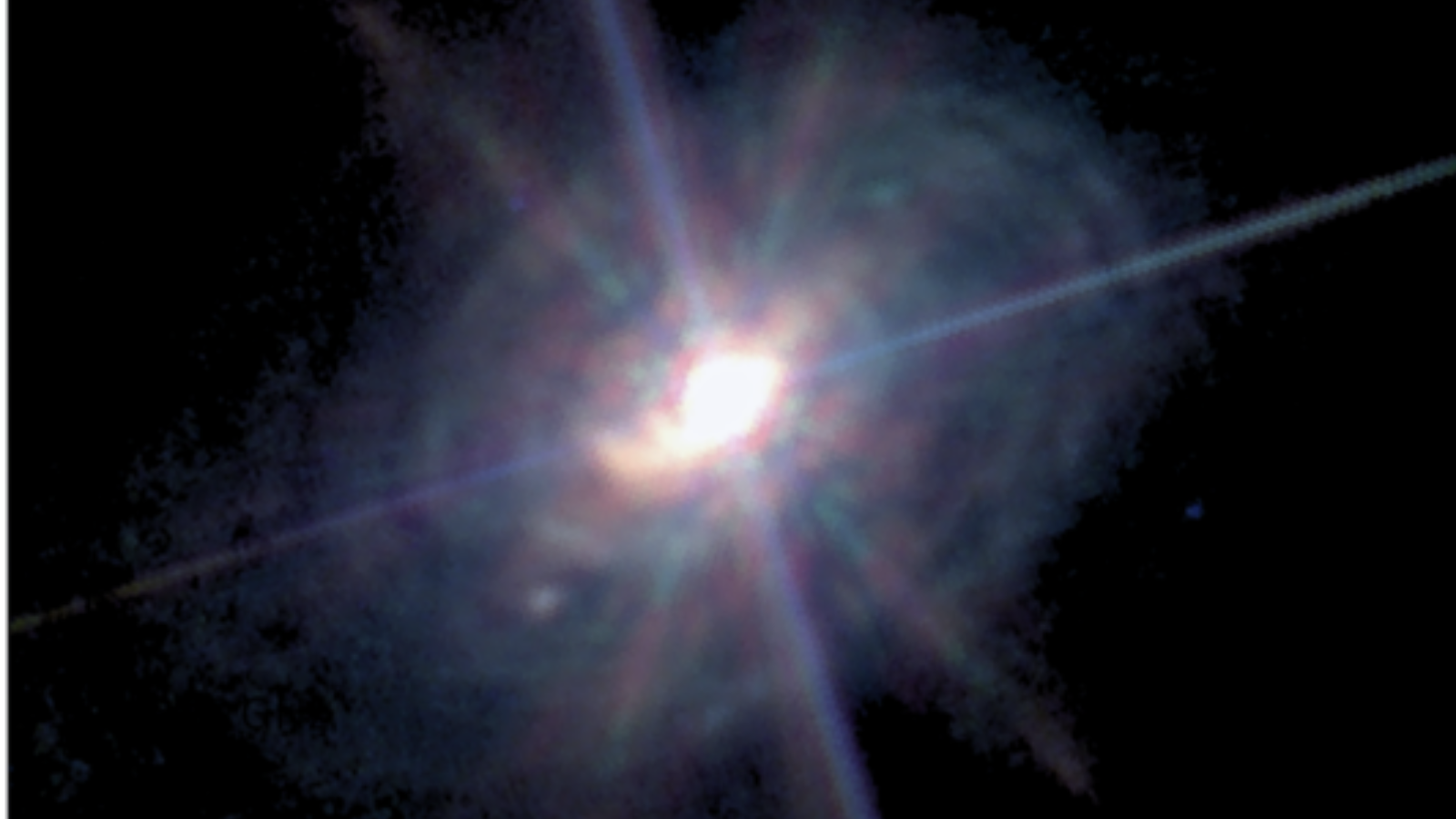
Using the James Webb Space Telescope (JWST), astronomers have imaged the structure of dust and gas around a distant supermassive black hole, quite literally finding a "shock" feature.
The team discovered that energy heating this swirling cloud of gas and dust actually comes from collisions with jets of gas traveling at near-light-speeds, or "shocks." Previously, scientists had theorized that the energy heating this dust comes from the supermassive black hole itself, making this an unexpected twist.
The galactic home of this particular supermassive black hole is ESO 428-G14, an active galaxy located around 70 million light-years from Earth. The term "active galaxy" means that ESO 428-G14 possesses a central region or "active galactic nucleus" (AGN) that emits powerful and intense light across the electromagnetic spectrum due to the presence of a supermassive black hole that is greedily feasting on matter around it.
The shock AGN finding was reached by members of the Galactic Activity, Torus, and Outflow Survey (GATOS) collaboration, who are using dedicated JWST observations to study the hearts of nearby galaxies.
"There is a lot of debate as to how AGN transfer energy into their surroundings," GATOS team member David Rosario, a Senior Lecturer at Newcastle University, said in a statement. "We did not expect to see radio jets do this sort of damage. And yet here it is!''
Related: Dark matter could play 'matchmaker' for supermassive black holes
Unlocking the secrets of a "noisy" black hole
All large galaxies are thought to have central supermassive black holes, which have masses ranging from millions to billions of times that of the sun, but not all these black holes sit in AGNs.
Breaking space news, the latest updates on rocket launches, skywatching events and more!
Take the Milky Way, for instance. Our galaxy's supermassive black hole Sagittarius A* (Sgr A*) is surrounded by so little material that its "diet" of matter is the equivalent of a human subsisting on one grain of rice every million years. This makes Sgr A*, which has a mass equal to around 4.3 million suns, a "quiet" black hole, but it sure has some noisy neighbors.
Take the supermassive black hole at the heart of the galaxy Messier 87 (M87), located around 55 million light-years away. This black hole M87* isn't just vastly more massive than Sgr A*, with a mass equal to around 6.5 billion suns, but it is also surrounded by a vast amount of gas and dust, which it feeds on.
This matter can't just fall directly to M87* because it carries angular momentum. that means it forms a swirling flattened cloud of gas and dust around the supermassive black hole called an "accretion disk," which gradually feeds it.
Supermassive black holes don't just sit in accretion disks passively waiting to be fed like a cosmic baby in a high chair. The immense graviational influence of these cosmic titans generates huge tidal forces in the accretion disk creating fiction that heats it to temperatures as great as 18 million degrees Fahrenheit (10 million degrees Celsius).
This causes the accretion disk to glow brightly, powering part of the illumination of the AGN. The immense gravitational influence of these cosmic titans generates huge tidal forces in the accretion disk, creating fiction that heats it to temperatures as great as 18 million degrees Fahrenheit (10 million degrees Celsius).
But that isn't all.
Like a misbehaving toddler, not all of a supermassive black hole's "food" is going into its "mouth." Powerful magnetic fields channel some of the matter in accretion disks to the poles of the black hole in the process accelerating these charged particles to near the speed of light. Like your child throwing its food at you.
From the two poles of the black hole, this matter erupts outwards as parallel astrophysical jets. These jets are also accompanied by the emission of light across the electromagnetic spectrum, especially powerful in radio waves.
As a result of these contributions, AGNs can be so bright that they outshine the combined light of every star in the galaxy surrounding them.
The dust that surrounds AGNs can often block our view of their hearts by absorbing visible light and other wavelengths of electromagnetic radiation. Infrared light, however, can give this dust the slip, and conveniently, the JWST sees the cosmos in infrared. That means the powerful space telescope is the perfect tool to peer into the center of AGNs.
When the GATOs team did this for ESO 428-G14, they found that dust near the supermassive black hole is spreading out along its jet. This revealed an unexpected relationship between the jets and the dust, suggesting that these powerful outflows could be responsible for both heating and shaping the dust.
Further studying the connection between jets and dust around supermassive black holes could reveal the impact these cosmic titans have on shaping their galaxies, and how material is recycled in AGNs.
"Having the opportunity to work with exclusive JWST data and access these stunning images before anyone else is beyond thrilling," Houda Haidar, a PhD student in the School of Mathematics, Statistics and Physics at Newcastle University, said. "I feel incredibly lucky to be part of the GATOS team. Working closely with leading experts in the field is truly a privilege.''
The team's research was published in the journal Monthly Notices of the Royal Astronomical Society.

Robert Lea is a science journalist in the U.K. whose articles have been published in Physics World, New Scientist, Astronomy Magazine, All About Space, Newsweek and ZME Science. He also writes about science communication for Elsevier and the European Journal of Physics. Rob holds a bachelor of science degree in physics and astronomy from the U.K.’s Open University. Follow him on Twitter @sciencef1rst.
